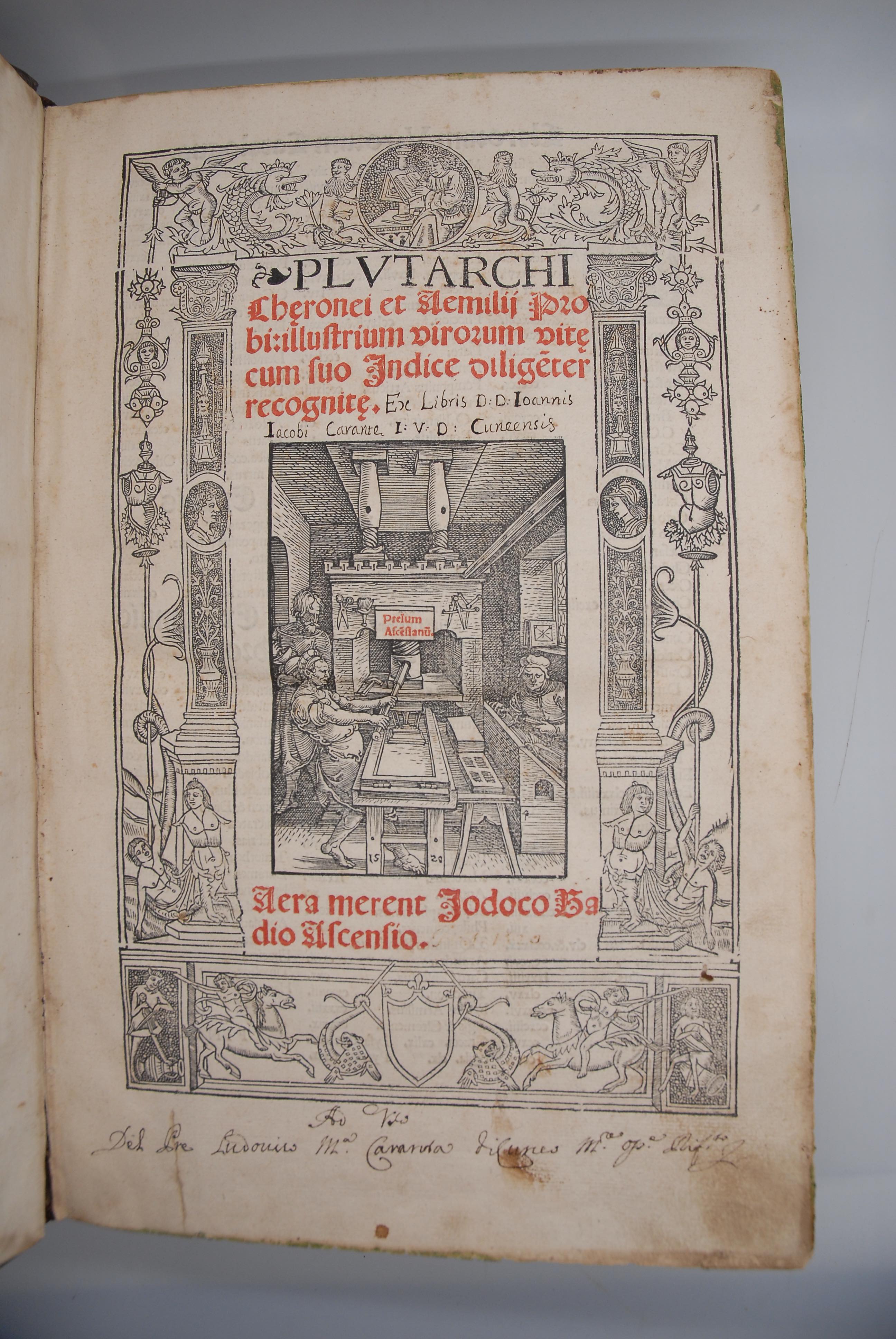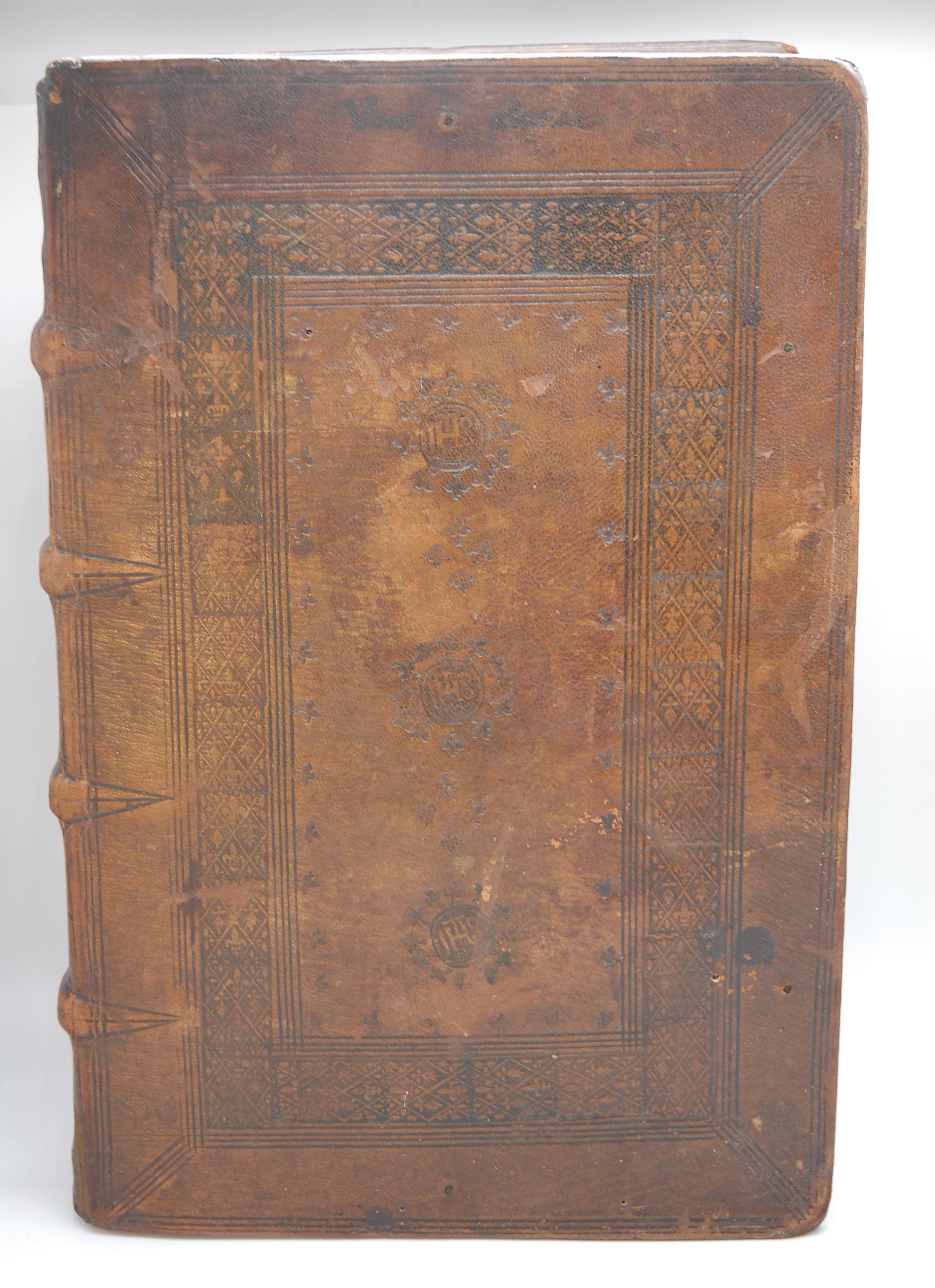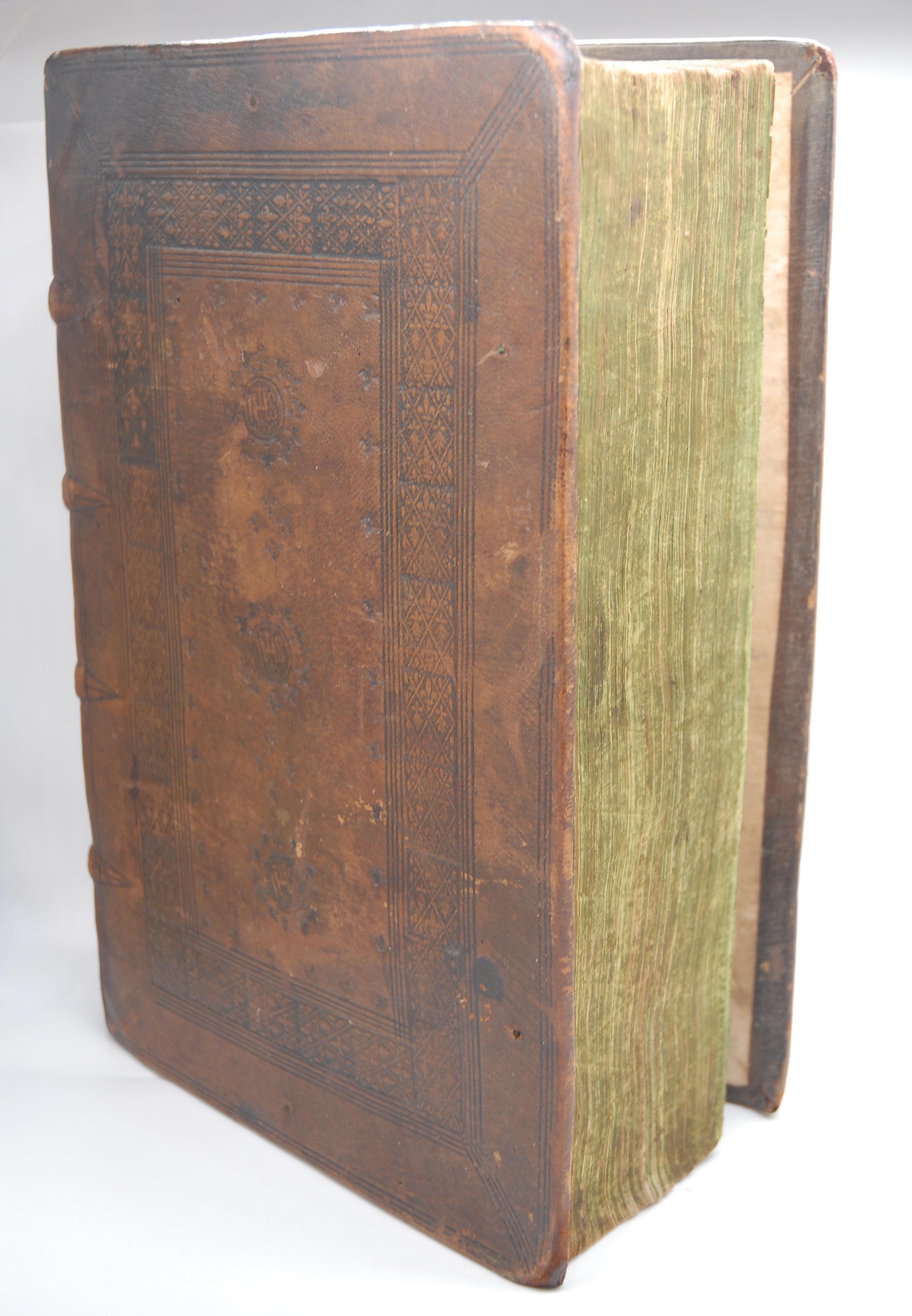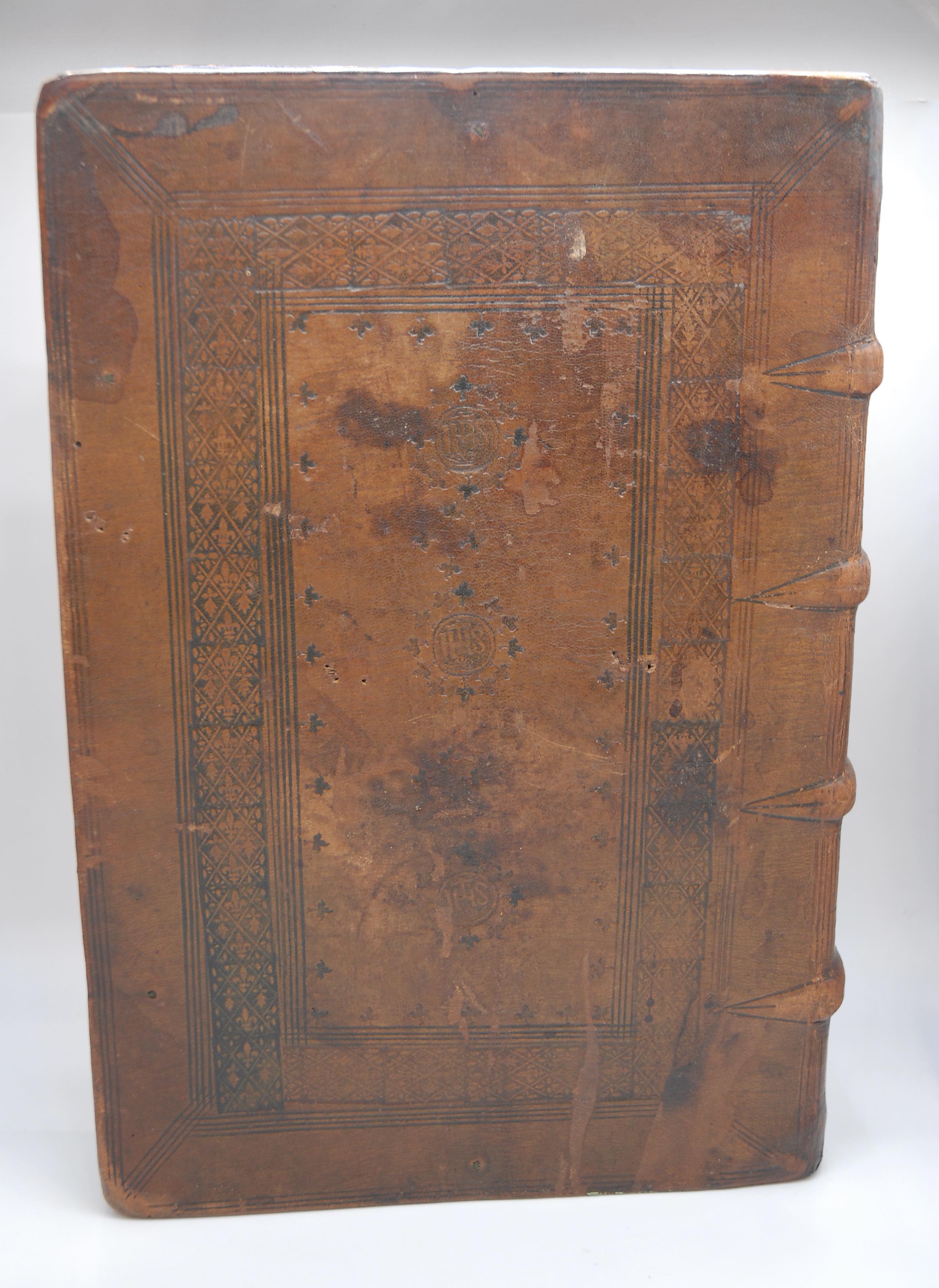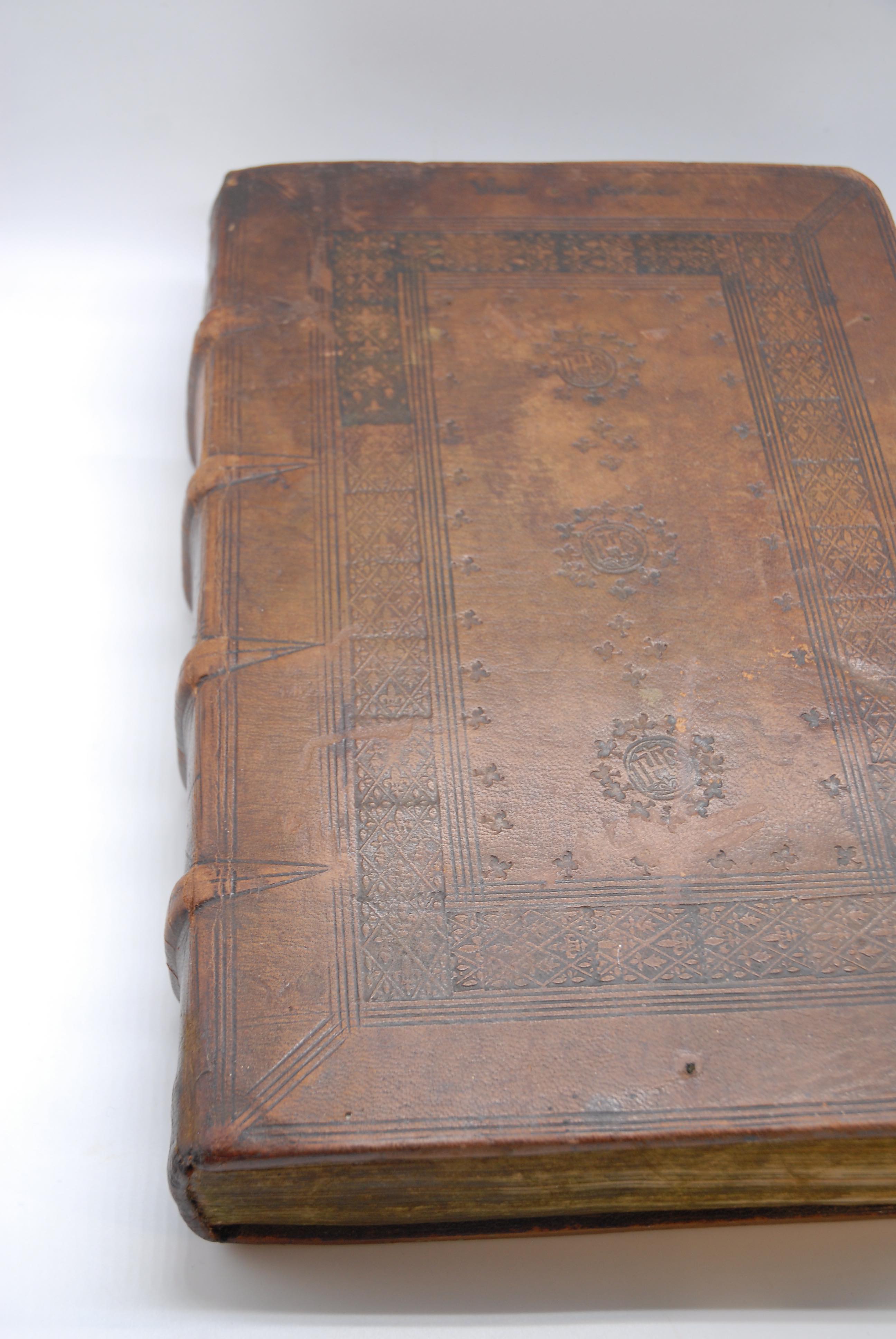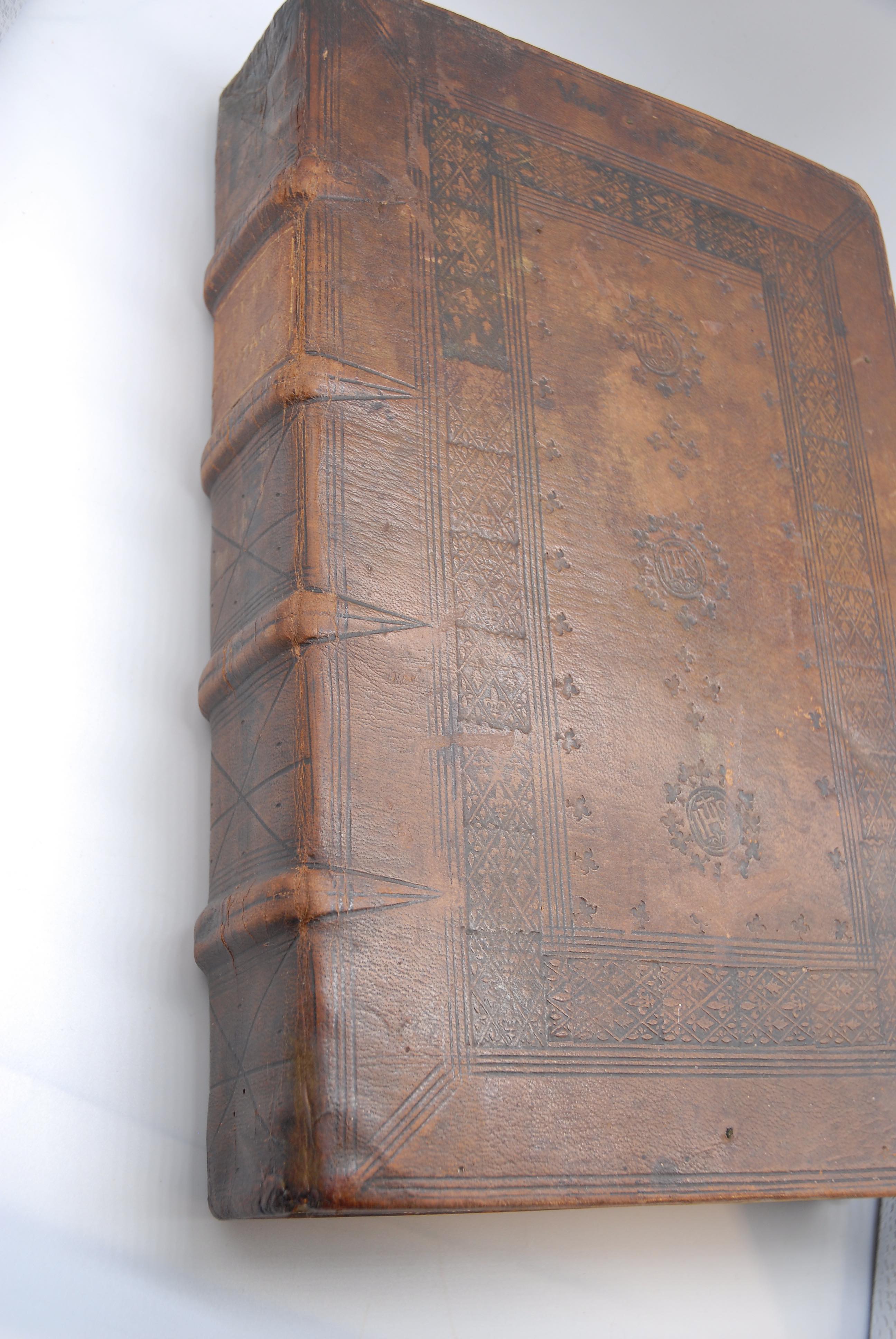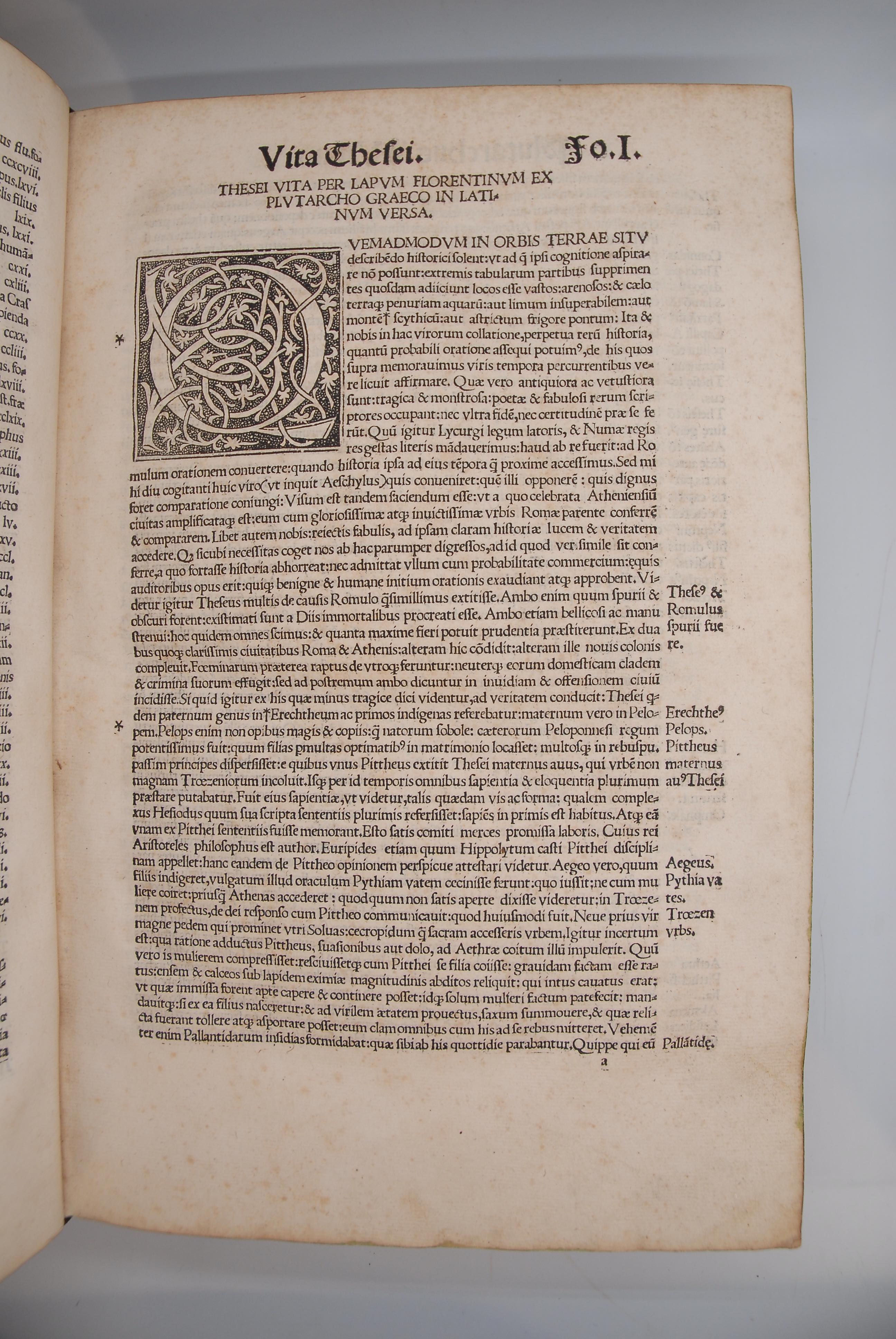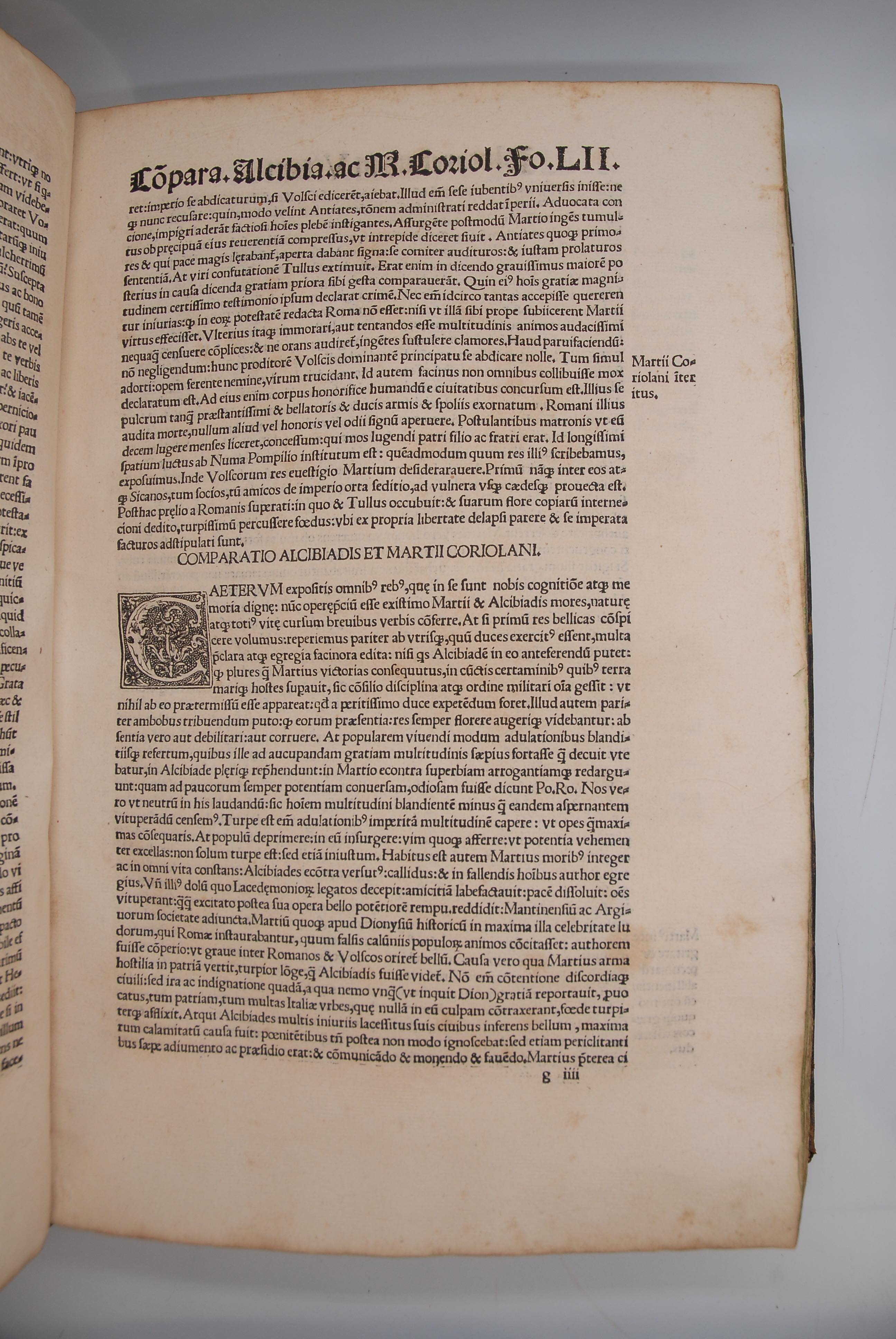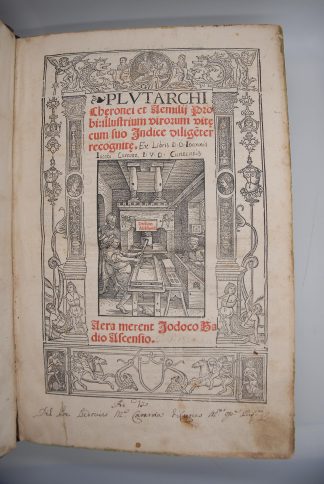PLUTARCH.
CONTEMPORARY PIEDMONTESE BINDING
Illustrium virorum vite
Paris, Jodocus Badius Ascensius, [1520]£12,500.00
Folio. ff. (xxii) CCCXCIII, lacking final blank. Roman letter, index in quadruple column. T-p
in red and black, handsome woodcut border with (above) scholar writing, putti and crowned
dragons, (centre) large printer’s device showing Ascensius’s printing press, columns
decorated with faces within ovals flanked by grotesques, (below) satyrs, soldiers on
horseback and blank escutcheon; decorated initials. T-p a little finger soiled, small marginal
ink splash, little repaired tear to lower blank margin of N 5 verso, intermittent marginal foxing, few marginal small paper flaws, rubbed ink splash affecting a couple of words, minor water stain to upper blank corner of last two ll. A very good copy in contemporary Piedmontese brown goatskin, lacking ties, triple blind ruled to a panel design, second border single cross-hatched in blind with fleurs-de-lis and three-pointed comets, centre panel bordered with small blind-stamped ivy leaves, three blind-stamped IHS roundels bordered with ivy leaf tool, raised bands, compartments single cross-hatched, later label and ink casemark to spine, all edges green and gauffered to a dentelle design, small repair at head and foot of spine. Later red crayon inscription to front pastedown, early ms. shelfmark and largely discoloured circular stamp to front pastedown, early ms. ex-libris ‘D.D. Ioannis Iacobi Carante I.V.D. Cuneensis’ and ‘Ad uso Del Pre Ludovico M a Caranta di Cuneo M re P a Pref to ’ to t-p, c.1600, and ‘Joh[ann]es Joseph Rabius huius libri d[omi]n[u]s. Hunc Antonius Luperia Cuneensis dominus 19 April. 1589 scribebat’ to rear pastedown, the odd contemporary annotation.
In the C16, this copy was in the private libraries of families near the Piedmontese town of Cuneo. With roots in the hamlet of Quaranta, Joannis Jacobus and Ludovicus Carante respectively were a lawyer ‘in utroque’ and a prefect. Rabia and Luperia were local surnames, the latter aristocratic. The handsome contemporary binding was most likely produced in the Cuneo territory. Given the IHS stamps, a good candidate may be the Cistercian Abbey of Santa Maria di Staffarda, a large and influential institution, with a scriptorium until the end of the C15.
A very good copy of this handsome Parisian edition of Plutarch’s ‘Lives’, produced at the famous press ‘Prelum Ascensianum’. Established in 1503 by the classicist Jodocus Badius Ascensius (or Josse Badius, 1462-1535), formerly editor for the Lyonnaise printers Jean Trechsel and de Vingle. Badius specialised in classical editions; the present edited by Gérard de Verceil, with a detailed index. ‘Vitae’, by the Greek philosopher Plutarch (46-119AD), greatly influenced Renaissance ‘mirrors for princes’ and was used for moral instruction. The work provided parallel biographies highlighting the virtues, vices and deeds of renowned Romans and Greeks, including Pericles, Theseus, Cicero, Demosthenes, Romulus and Scipio Africanus (who elicited the interest of the early owner of this copy). First used in 1507, Badius’s ‘marque typographique’, after his own design, is the second, and first detailed, illustration of a printing press. In this edition, a new version appeared, recut by a German artist, with important differences. ‘In the second, the composing-stick used by the figure in the act of setting type is changed from the right to the left hand; the press shows improved mechanical construction, indicating greater solidity and strength. […] the figure sitting at the case on the right side of the engraving is intended to represent a woman, instead of a man as in the earlier illustration’ (Roberts, ‘Printer’s Marks’, 116-17). The four tools hanging from the machine are scissors to cut the paper or frisket, a brush for pressing down the cloth or paper tympan, dividers, and a mysterious Y-shaped tool.
Only 4 copies recorded in the US.Renouard, Imprimeurs & Libraires Parisiens, III, p.179; Pettigree & Walsby, French Books, 83337. Not in USTC, Dibdin, Moss, Brunet or BM STC Fr. W. Roberts, Printers’ Marks (London, 1893).In stock


